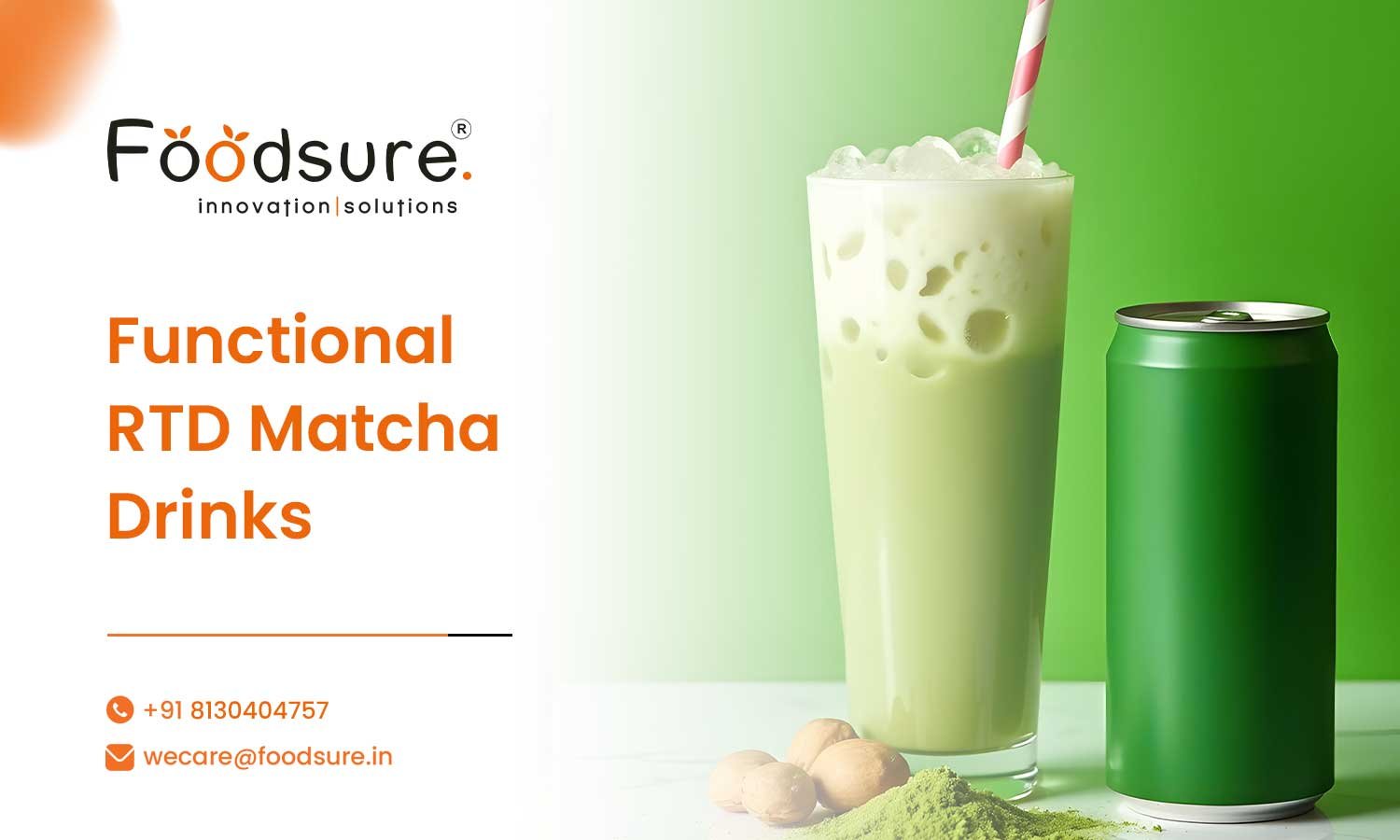Tea is a powerful and famous drink that people consume these days. Let’s talk about the green Japanese tea, Matcha, which is popular amongst consumers. Matcha is not just a trending drink option for your customers; it’s a clinical-grade functional powerhouse. Rich in L-theanine (for calm focus), EGCG antioxidants (for cellular protection), and caffeine (for alertness), it gives you good mental health power for better performance without energy crashes. This is the right time for all the beverage startups to grab the opportunities and formulate functional RTD matcha drinks with us.
Unlike synthetic stimulants, matcha’s bioactive profile supports neuroprotection, metabolism, and brain performance—all in one sip. In India, more and more people are choosing healthy drinks, and this market is growing at a good pace, by more than 12% every year. That’s why functional RTD matcha drinks are becoming a favorite, especially for people looking for plant-based and clean-label options.
But formulation is not just about mixing matcha with water. The real challenge lies in pH optimization (for microbial stability), emulsification (for nut milk blends), clean label ingredient findings, and FSSAI compliance at every stage. One misstep in these parameters—oxidation, flavor instability, non-compliant additives—and your product is shelf-rejected or spoiled.
The blog is all about trends, what makes a shelf-stable, export-ready, high-performance functional RTD matcha drink possible in the real world—scientifically, technically, and legally.
Process of Functional RTD Matcha Drink Formulation
Base Composition
- Liquid Base: Water is the primary medium for your matcha tea formulation, often blended with coconut milk, almond milk, or oat milk to enhance mouthfeel and deliver plant-based appeal.
- Matcha Dose: An effective dose typically ranges from 1.5g to 2g per 250 ml, balancing taste, color, and functional benefits in RTD matcha drink formula.
- Sweeteners: For clean label matcha beverages, use alternatives like stevia (INS 960), monk fruit, and erythritol offer sweetness without sugar spikes.
- Optional Functional Boosters: Ingredients such as collagen, adaptogens (like ashwagandha), electrolytes, and even nootropics can be layered in—if the RTD matcha drink formula complies with FSSAI norms. Whether you’re going for a cold brew matcha tea formulation or a sparkling matcha recipe, ingredient interaction matters. For brands exploring a matcha carbonated drink, CO₂ interaction with matcha and sweeteners must be tested carefully to prevent excessive bitterness or loss of antioxidants.
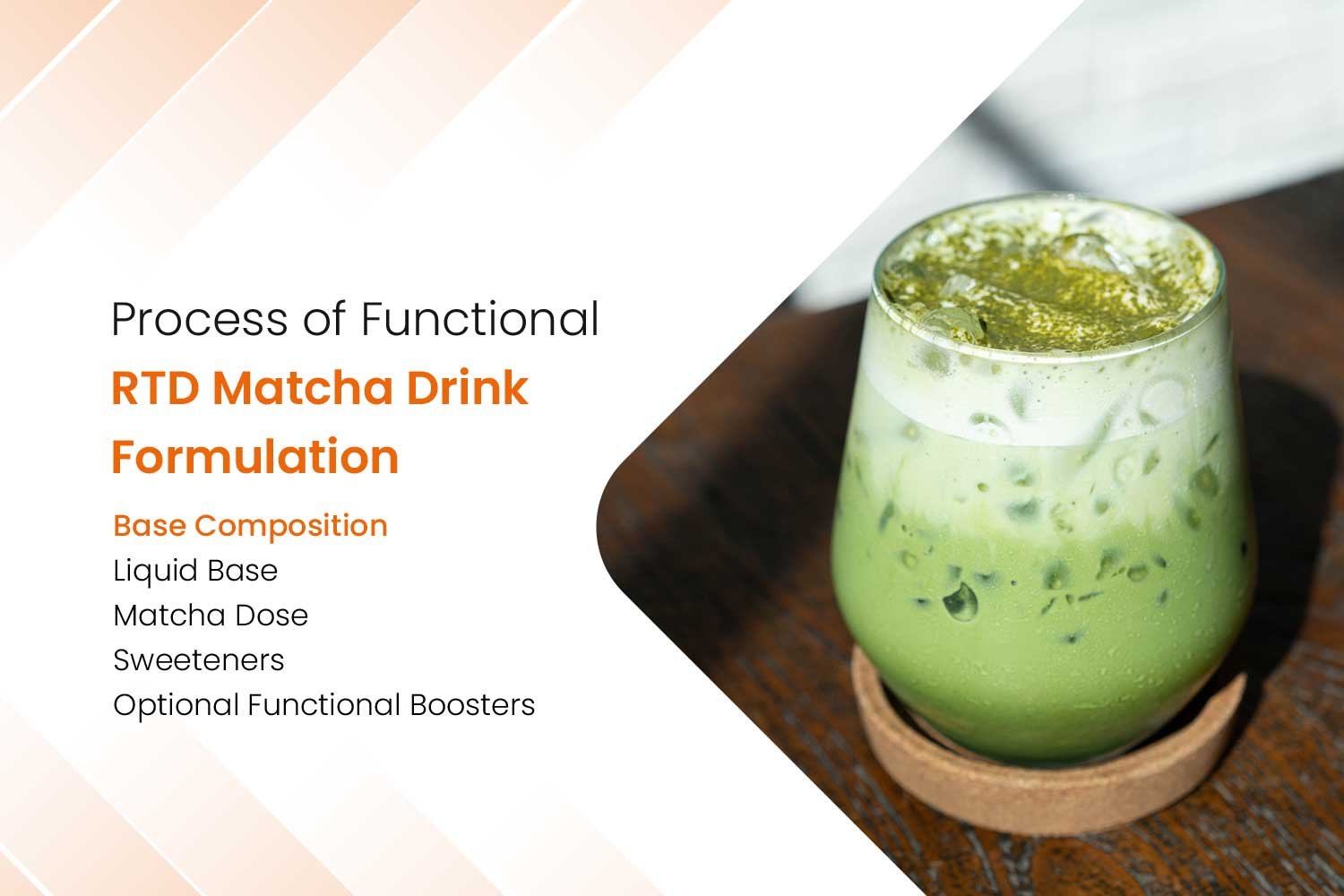
pH & Stability Management
- Target pH: Maintain pH between 4.0 to 4.4 for microbial safety and to meet beverage preservation norms.
- Oxidation Management: Matcha green tea RTD formulation is sensitive to oxygen, which can cause browning and off-flavors. Use of ascorbic acid (INS 300), citric acid (INS 330), or Vitamin C can stabilize color and flavor.
- Processing Techniques: Choose between cold fill with preservatives, hot fill (80°C+), or High Pressure Processing (HPP) depending on desired shelf life and label claims.
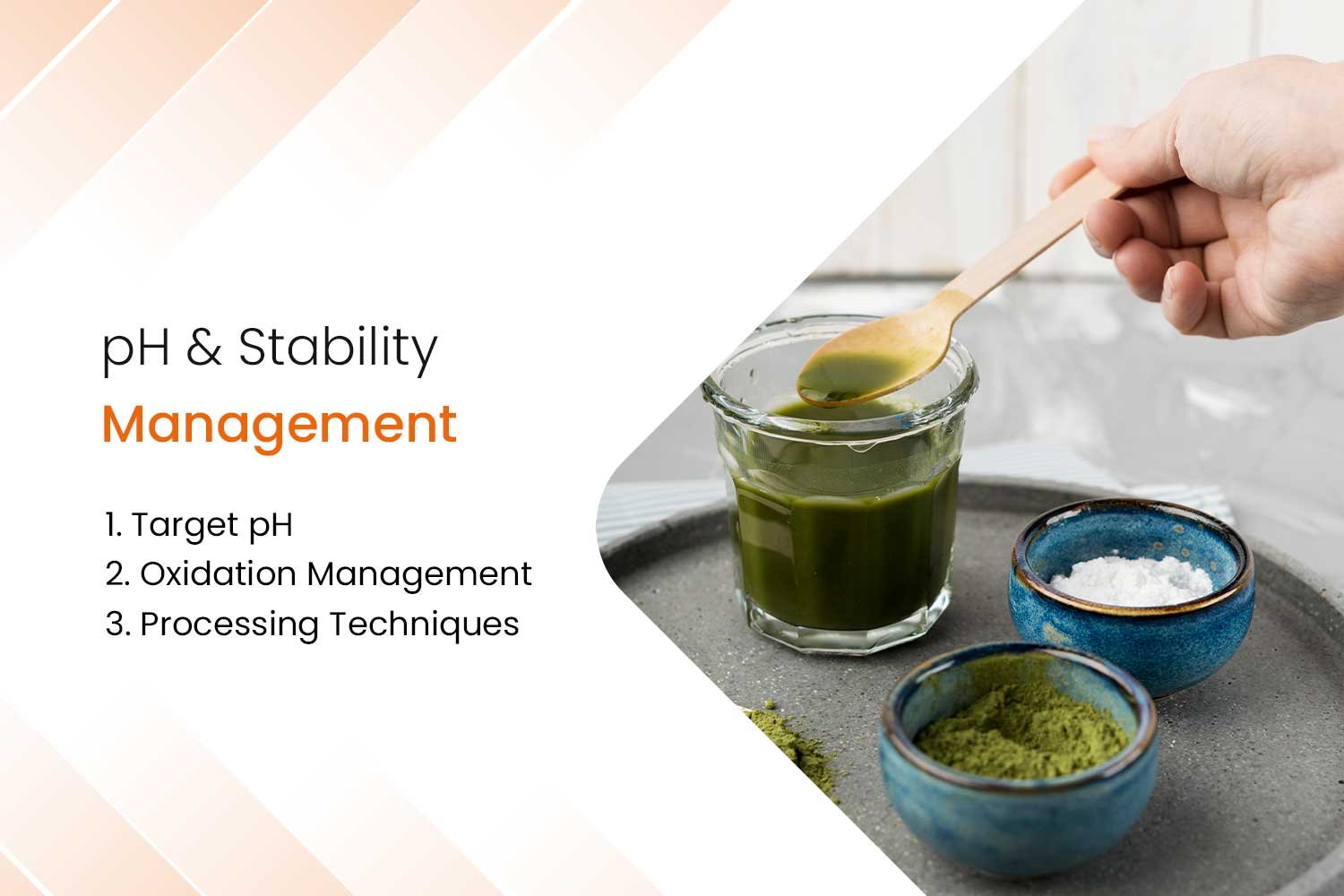
Clean Label Formulation & Texture Management
- Avoid: Carrageenan, synthetic emulsifiers, and artificial stabilizers.
- Use: Sunflower lecithin or acacia gum for emulsification, especially when using nut milks.
- Mixing: Employ high-shear mixing for uniform distribution and emulsion stability. Matcha green tea RTD formulation.
- Packaging: Choose glass or multilayer PET bottles with nitrogen flushing to minimize oxidation.
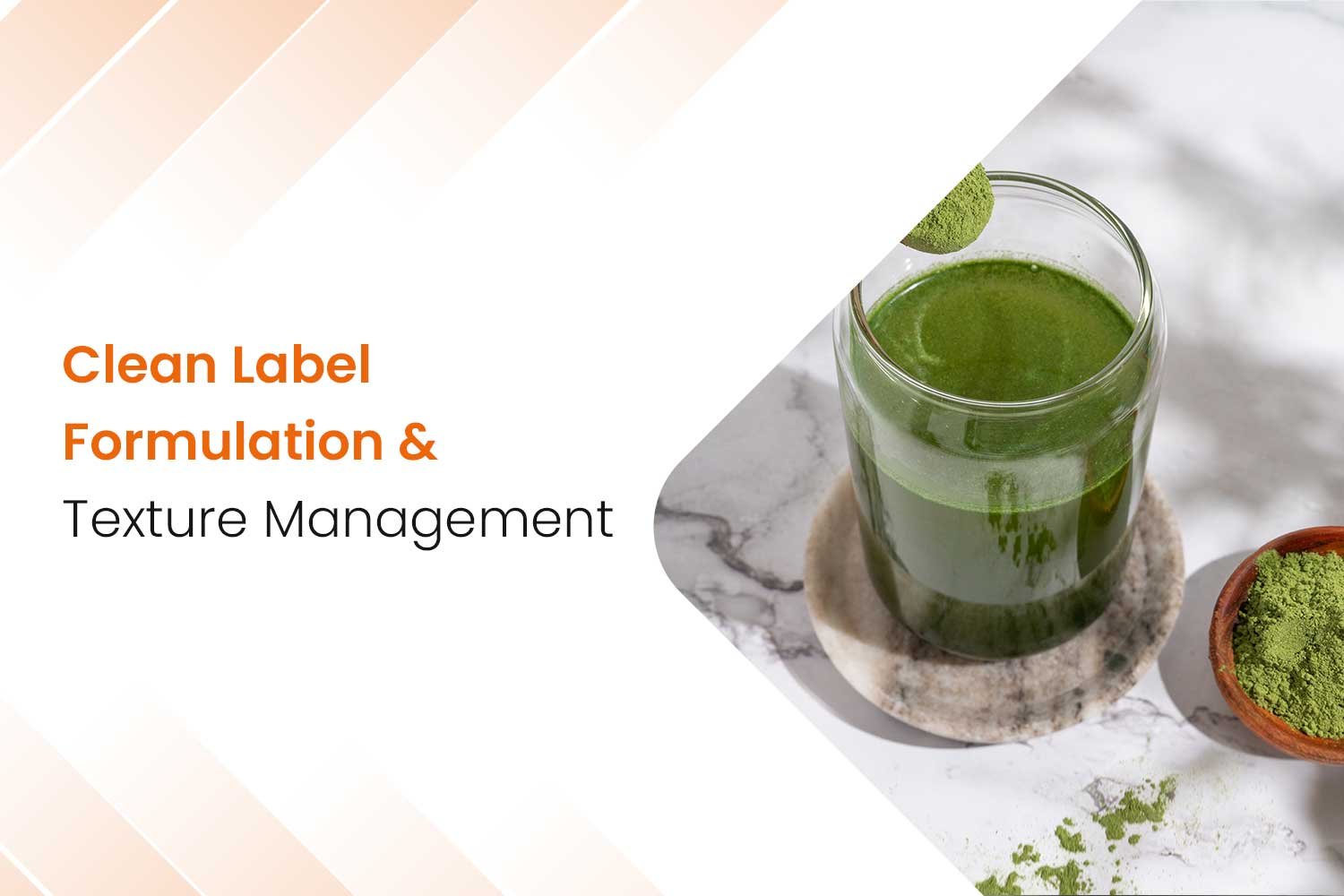
FSSAI Compliance – What Every RTD Matcha Brand Must Know
| Area | Requirement |
| Food Category | 14.1.4 – Non-carbonated flavored water-based beverages. |
| Permitted Ingredients | Matcha green tea RTD, plant-based milks, erythritol, stevia, citric acid. |
| Additives | INS 330 (Citric Acid), INS 300 (Ascorbic Acid), INS 960 (Stevia) |
| Label Claims | Declare caffeine content if >145mg/L, only use “No Added Sugar” if truly compliant |
| Shelf Life Testing | Conduct real-time & accelerated tests for TPC, yeast, mold, and coliforms for your RTD matcha drink formula |
| Mandatory Declarations | Veg logo, allergen disclosure (e.g., almond), caffeine disclosure, FSSAI license no. |
What Goes Into Clean Label Functional RTD Matcha Success
We create a clean-label functional RTD matcha drink means selecting ingredients that do their job—sweetening, preserving, improving texture—while still being natural and approved under FSSAI norms.
You know what. Your antioxidant source should be matcha itself, often supported by Vitamin C, which helps protect the product from oxidation. For sweetness, stevia and monk fruit are the go-to options because they’re plant-based and calorie-free, and they don’t require any chemical additives. If you’re using almond milk or oat milk for texture, make sure they are additive-free and labeled clearly. Then only your functional RTD matcha tea product will be considered a clean label formulation.
To keep everything mixed smoothly, especially when you’re using nut-based milks, stabilizers like sunflower lecithin or acacia gum are both safe and clean label. When it comes to shelf life and product safety, mild preservatives such as citric acid and ascorbic acid do the job while maintaining a natural profile.
All these ingredients together make a product that performs excellently in the lab; moreover, it performs well on the shelf and builds trust with consumers. When combined, these elements allow you to add logos such as Gluten-Free, Vegan, No Artificial Preservatives, Non-GMO, and Plant-Based, making your functional RTD matcha drink more market-ready and brand-friendly.
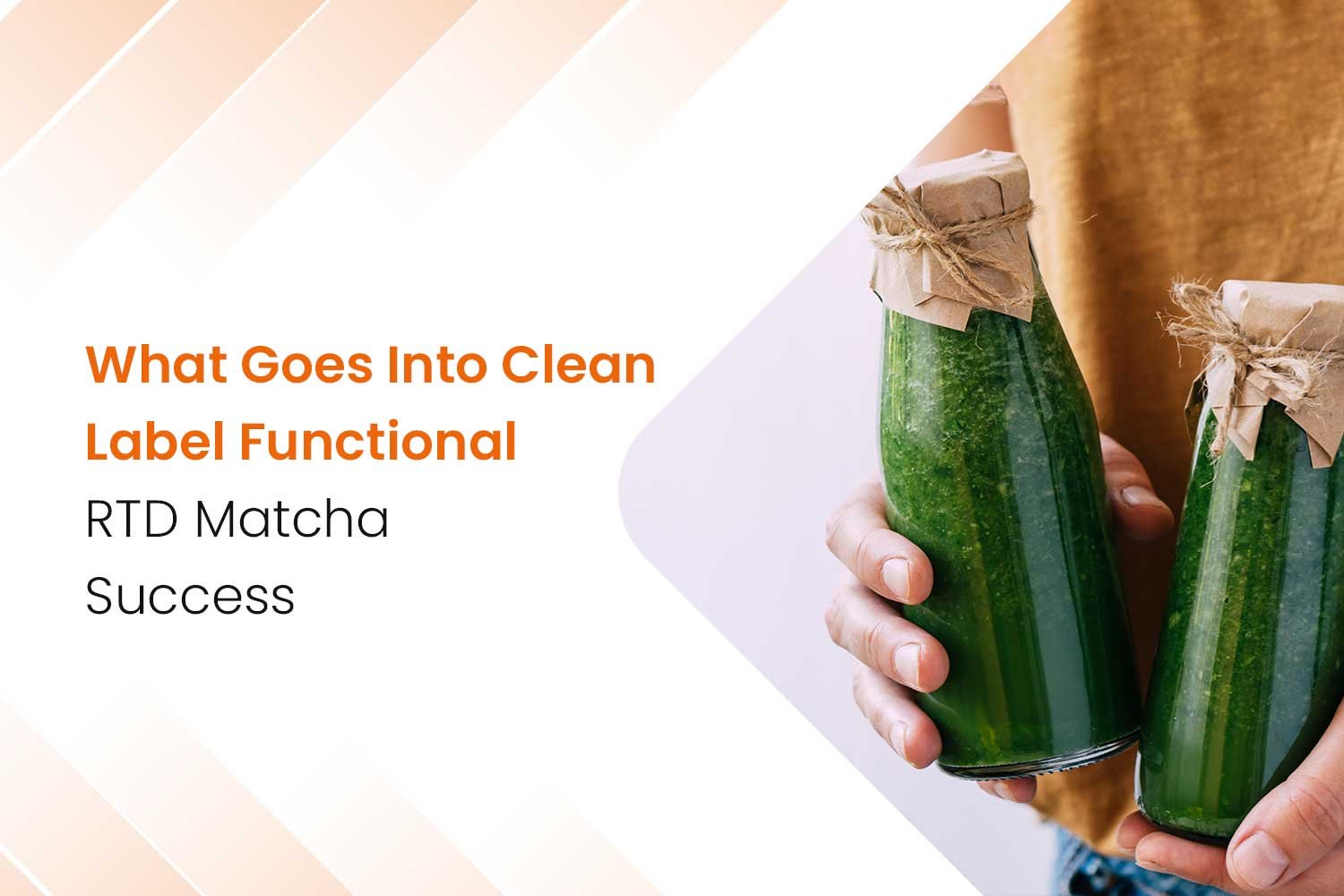
Packaging, Shelf Life, and Cold Chain Considerations
- Preferred Packaging: Glass bottles or multilayer PET for better barrier properties
- Processing:
- Hot Fill (85°C+): Works for a 6-month ambient shelf life
- Cold Fill + Preservatives: Cost-effective, but may affect label appeal
- HPP: Premium method for 30–45 day chilled shelf life without preservatives
- Cold Chain: Required if no preservatives are used. Ensure 0–4°C transport/storage.
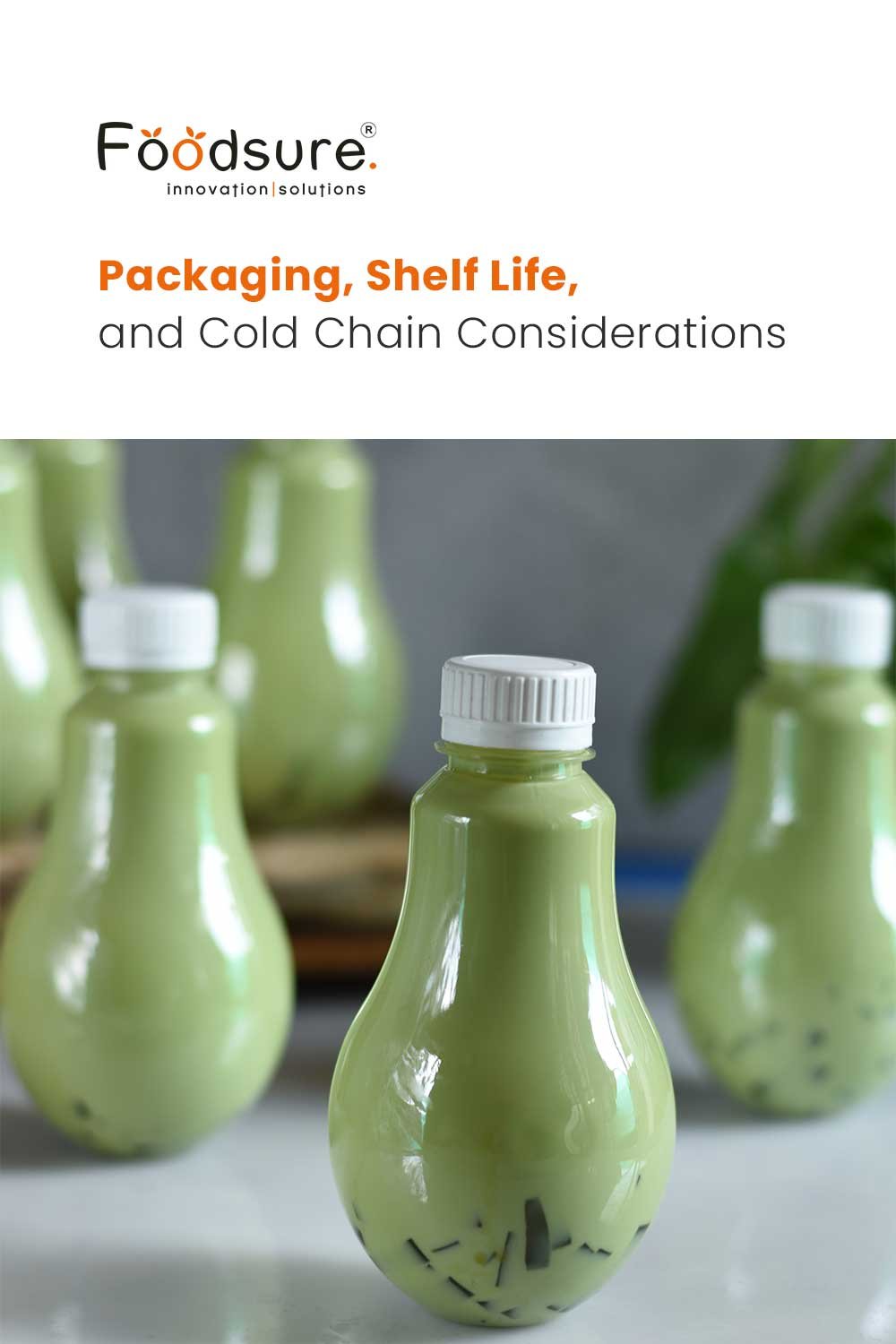
Case Study: Clean Label Matcha RTD Success
Brand A wanted a vegan, low-sugar matcha RTD, with a 6-month shelf life for India and GCC markets.
- Formulation: Almond milk, ceremonial grade matcha, erythritol, stevia, acacia gum, citric acid.
- Processing: Hot fill at 85°C into 250 ml glass bottles
- Shelf Life: 6 months ambient
- Compliance: Registered under FSSAI 14.1.4 with full label compliance
- Export: Passed ESMA requirements for UAE retail
This success proves that functionality, taste, and compliance can coexist when the formulation is done right. The right formulation will be done by the right consultant. Contact us now.
Is Your Matcha Beverage Really Clean Label? We’ll Audit It in 24 Hours
You, as a brand, cannot do it alone; join hands with Foodsure now to make your product a blockbuster. Building a functional RTD matcha drink isn’t just about choosing trendy ingredients. It’s a fine balance of flavor science, functional nutrition, regulatory know-how, and shelf stability. One misstep in pH or labeling, and the product could fail in retail or spoil on shelves.
If you’re serious about launching a FSSAI-compliant, clean-label formulation, high-performance RTD matcha drink formula, you need more than just ingredients. You need formulation partners who understand the science and the standards.
- Book a Free 30-Minute Beverage Consultation
- Request a Label Compliance Review

